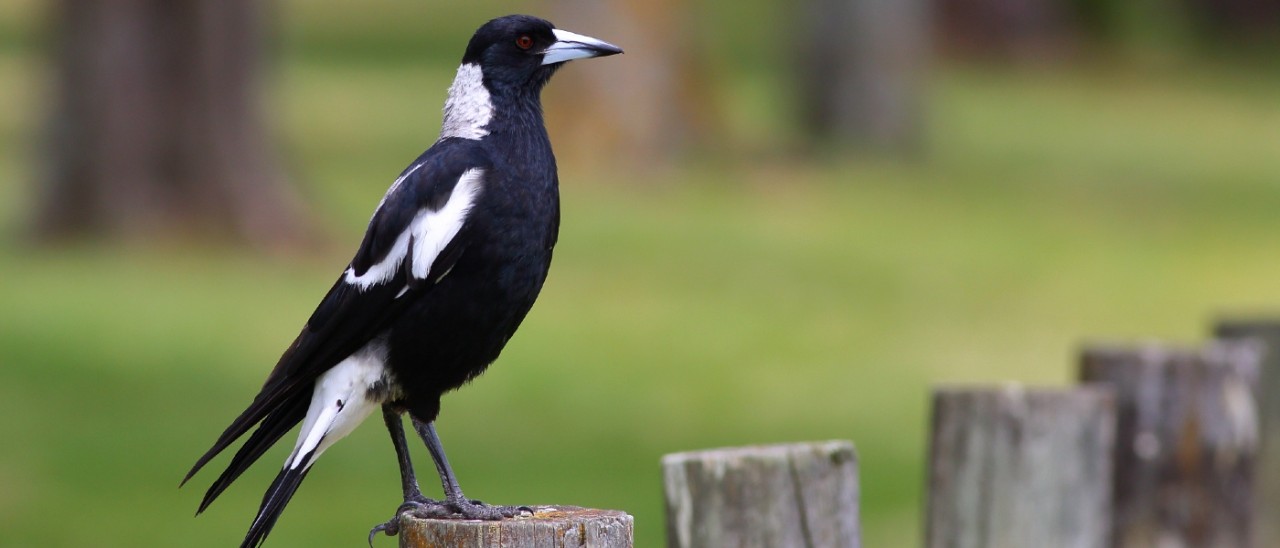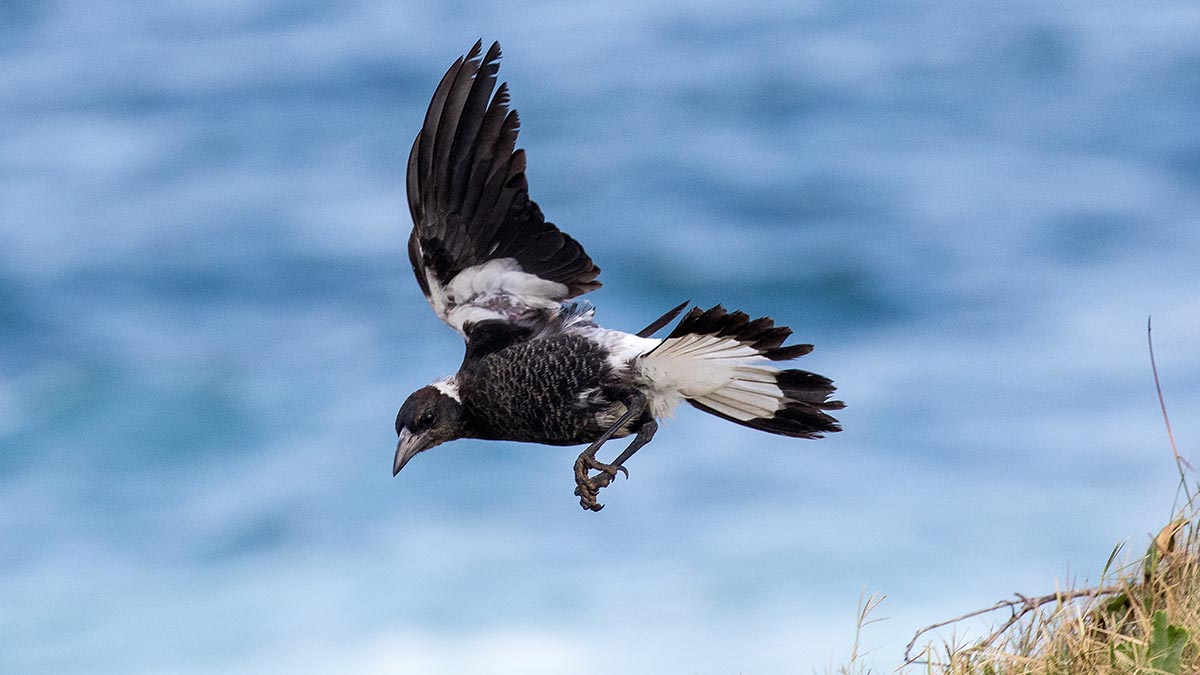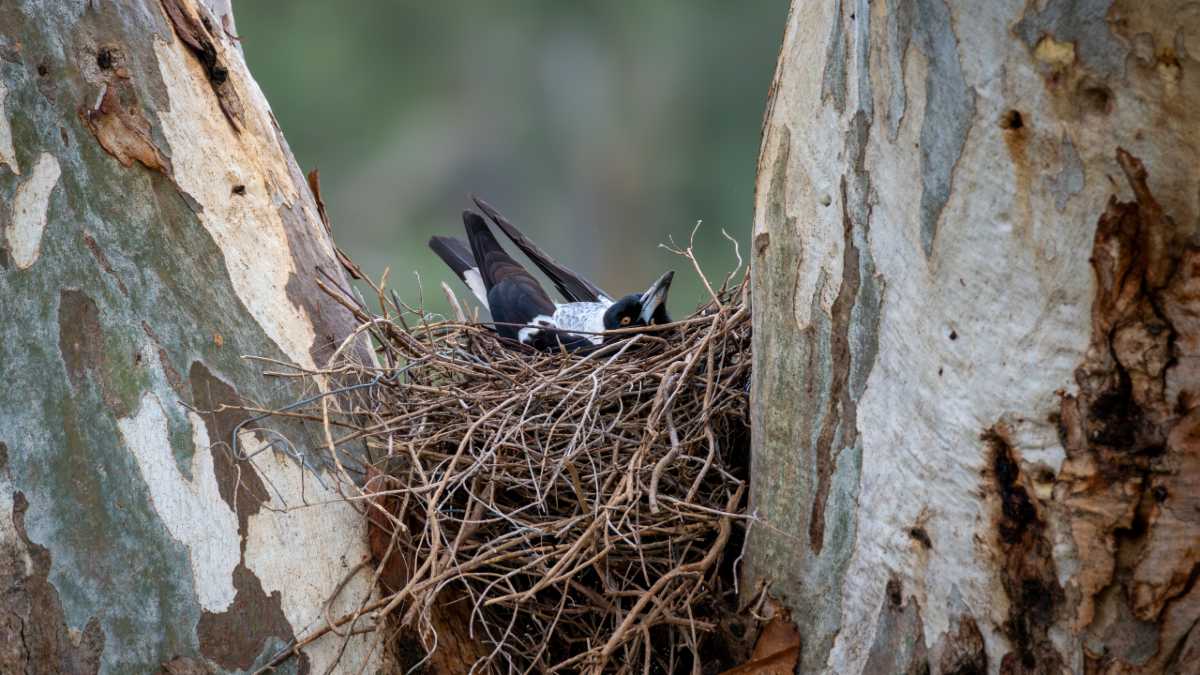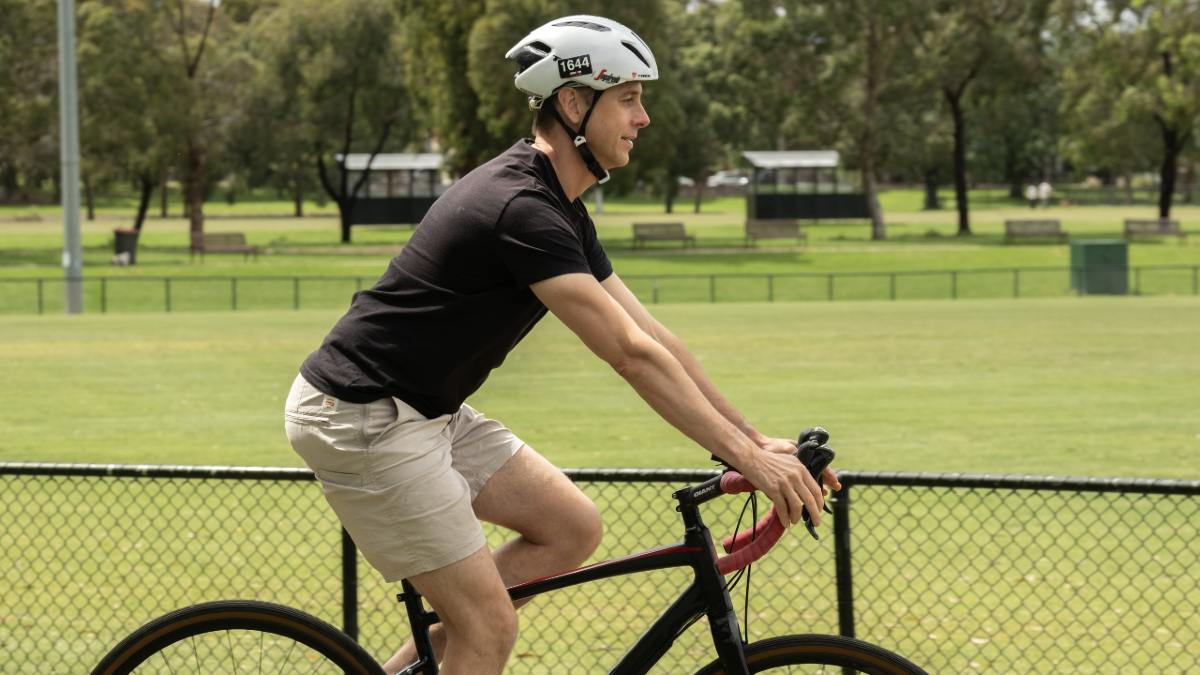Considering adding an electric bike (e-bike) to your household? Here’s everything you need to know about buying and riding an e-bike, including how they work and how to charge them.
How to stay safe during magpie swooping season in Victoria

Learn about magpie swooping season in Victoria, from when it starts to who's at risk and easy ways to reduce your chance of being swooped this spring.
There are few birds that inspire such seasonal infamy as the Australian magpie.
Magpie swooping season arrives in Melbourne and wider Victoria every spring, surprising unsuspecting pedestrians and bike riders as they go about their day.
The good news is that most magpies and other swooping birds aren’t as aggressive as their reputation suggests, and there are plenty of ways to stay safe.
More: The must-know road rules for bike riders and cyclists in Victoria.

Swooping season kicks off in earnest around September each year in Victoria. Photo: Getty.
Why do magpies swoop?
Magpies swoop to protect their young during the breeding season, which runs from June to December each year. According to Birdlife Australia, Victoria’s swooping season kicks off in earnest from September.
Thankfully, the number of magpies that swoop is very small, with the RSPCA estimating only around ten per cent of breeding pairs engage in the behaviour. Of this minority, it is usually the male bird that swoops, and only while they have chicks in the nest – a period of roughly six weeks.
Though they can be terrifying, most magpie swoops that occur do not result in injury. The community-run website MagpieAlert has been collecting data on swooping magpies since 2013. In 2024, the website recorded 3,563 magpie swoop attacks across Australia, of which only 13 per cent resulted in injury.
The behaviour is very much defensive, which most birds deliberately opt for a near-miss to try and scare the potential threat – that is, you. That loud ‘clack’ you hear is made by the bird’s beak as a warning noise, not the bird making contact with you.
The magpie isn't alone in displaying swooping behaviour during breeding season. Other Australian birds that swoop include the magpie-lark, red wattlebird, kookaburra, grey butcher bird and masked lapwing.

Only a small percentage of magpies swoop during breeding season. Photo: Getty.
Why do magpies swoop cyclists and dogs?
Magpies swoop at perceived threats – things that for whatever reason they believe pose a risk to their chicks.
What might be a threat to you, is the same as what magpies fear: roaming cats, foxes, dogs, and fast-moving objects. This includes people on bicycles, who are often a prime target for swooping - MagpieAlert data notes that for 2024, 67.2 per cent of reported swoops happened while riding a bike.
If you’ve ever felt like a particular magpie has a vendetta against you, and only you, then you might not be imagining it. Magpies may target specific, seemingly non-threatening individuals for unknown reasons.
The birds are extremely good at remembering faces and live long lives – up to 30 years under ideal conditions. In fact, magpies can reportedly recognise up to 100 different faces, according to The Australian Museum. That means if you invoke the ire of a particular bird (or you look similar to someone who did), it is likely to remember you, and swoop accordingly in the future.
How to avoid and protect yourself from swooping magpies
Stay away from birds and nesting areas
The simplest way to avoid being swooped is to avoid locations guarded by swooping birds. MagpieAlert publishes a map of known swoops as reported by the public, as does the Department of Land, Water and Planning.
Your local council may also keep a list of known swooping locations within the municipality or put up signs in known swoop locations.
If you notice a bird swooping in your neighbourhood, try to take an alternate route. Remember that each bird that swoops only does so for around six weeks.
Walk, don’t run
It’s important to leave the area as soon as possible if a magpie is swooping you, but you shouldn’t run. Magpies tend to see fast-moving objects as more threatening so you should calmly, but quickly leave their territory if being swooped.
If being swooped whilst cycling, dismount and leave the area on foot. It may stop the bird swooping you, but more importantly it can also reduce the risk of you having an accident due to the bird distracting you.
RACV Bike Assist can arrange a maxi taxi for you should your bike become damaged or you're unable to continue your journey while cycling.
Don’t fight back
Don’t try to scare off or confront a swooping bird. Magpies, like all native animals, are a protected species and it illegal to harm them, their nests, or their eggs.
Harassing them reinforces their perception of you as a threat, potentially making you a permanent target for swooping.

Dismount and calmly walk away if you're targeted by a magpie while cycling. Photo: Shannon Morris.
Eyes up
Do you always seem to get swooped from behind? It’s not a coincidence – magpies are less likely to swoop you if you’re looking directly at them. If you encounter a swooping magpie, keeping your eyes on it while leaving the area may reduce the likelihood they’ll swoop again.
The old trick of drawing or gluing googly eyes to the back of your bicycle helmet has produced mixed results – it may or may not work depending on the particular bird.
More: Helmet rules for bikes in Victoria.
Carry an umbrella
If you can’t avoid a known swooping area, using an umbrella can protect you while you (calmly) move through the territory.
The brolly shouldn’t be used as a weapon. Simply open it when you enter the territory, covering your head to protect yourself should the magpie decide to swoop.
Go to Tasmania
Generally speaking, magpies in Tasmania do not swoop. Reasons for this are unclear, but if you really want to avoid swooping season then maybe spring is a good time to book a Tasmanian holiday to Hobart or the beautiful West Coast.


